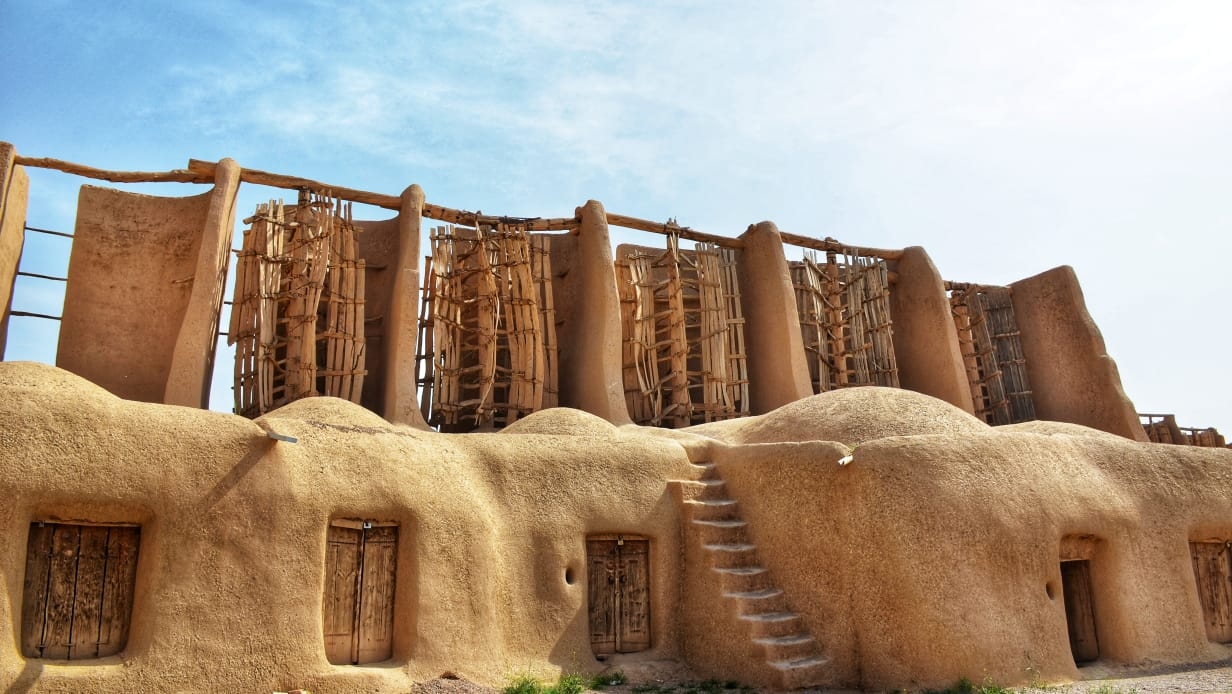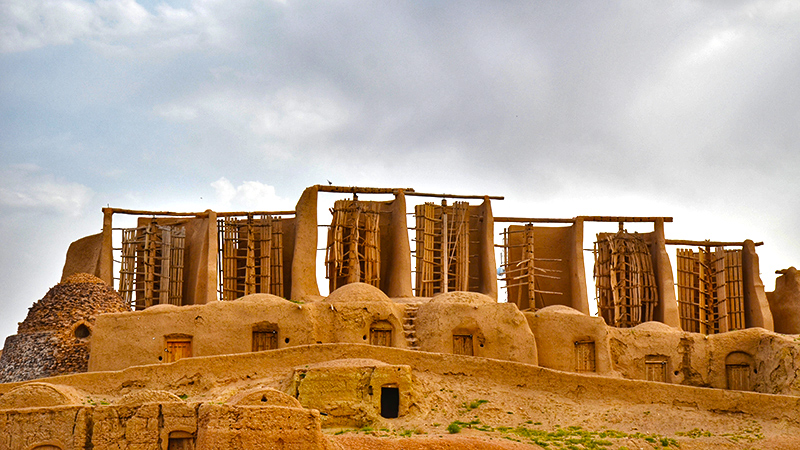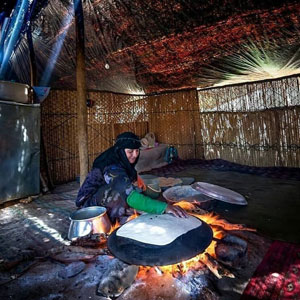 Signin with Google
Signin with Google Signin with Facebook
Signin with Facebook Places
PlacesA Thousand Years of Nashtifans' Spinning Windmills

In the heart of gold deserts in the Iranian plateau, along with the skirts of Nashtifan country, these lofty muddy towers stand upright for centuries to be a sign of the remarkable intelligence of Iranians in the past. Ancient Persians harnessed the roaring winds with their unique idea of windmills. With the help of the brilliant system of wind-driven mills, they satisfied their need for food and produced the strategic product of flour with the flavour of these windmills.
Nashtifan, home to primary functional windmills of the world
When the strong monsoon season starts in the area, nothing can stand fast before the crazy gales. The vigorous typhoon stings and destroys everything on its way but the downhill in Nashtifan built wonderful Asbads to use the wild power of the wind. Nashtifan Windmill Complex or locally known as Asbad is one of the primitive windmills of the world.
Nashtifan literally means "storm's sting", is an old town in the northeastern part of Iran near Khaf in Khorasan Razavi Province. Along with the southern districts of the town, in the widespread desert, tall adobe towers attract every viewer's attention from distance. The height of these erected towers is about 20 meters. Clay, straw and wood are the only embryonic natural materials used to build frothy amazing structures.
In the middle of spring and during summer in the east of Iran, it is the time of monsoon and dominant wind. The strong wind is known as "120 Day Wind" or "Badkuh" blow from Baluchistan to the northeastern parts of the deserts. The speed of these high winds reaches 100 to 120 kilometres an hour in the Lut plain, an off the beaten natural disaster! But these architectural wonders stretched over a thousand meters of the region and stayed firmly for about 1,000 years before the storm storms.

Crazy winds, the natural treat or an opportunity
Iranians always put knowledge and art together to make good use of natural resources. Nashtifan Windmills are the signs of this old tradition of using possibilities and feasibilities to overcome formidable obstacles of life conditions.
The history of windmill constructions in Iran goes back to long years before the advent of Islam since 633 AD. Persians used the system of windmills to pump water to the surface around 5,000 years ago. Nashtifan Windmills are the incomparable samples of this creative local-industrial complex that still work after centuries.
Windmills in Nashtifan have double functions. Locals with the unique idea of Asbads utilized the threat of vigorous winds as the kinetic power to ease their lives and also as a protection wall before the town in this wuthering region.

Simple but efficient
Nashtifan Asbads are erected on two parallel adobe walls on the southern edge of the city. These towers have two main parts, the windcatcher tower and the lower room where the stone mills were spinning. The windcatcher at the topmost part of the tower has a vertical opening face to the northern part of the region. So, they easily trap the wind and direct it to the vertical wooden vanes in the middle of the structure. Handmade wooden blades dance with the wind and by their rapid whirl, they transfer energy to move the big grindstone under the tower. The fundamental part of the Asbads is the room where the big round stones are located. There are also some rooms for storing flours and an adobe stairway connecting the room to the wind chamber.
This simple but efficient system can produce up to about 150-kilogram wheat bags if the wind blows. There is a tank above the stones to put the wheat seeds in. The amount of wheat pouring from the tank to the stone hole is regulated by the wind pressure and speed. So, there is no need for an operator to control the whole process of graining.

Vertical windmills, a legacy from Persians for the world
It is said that the knowledge of building wind-driven mills spread throughout the world via Iran. But the system was adapted differently in other places. What makes Nashtifan's Windmills different from those found in other parts of the globe, especially in Europe, is the axis of the wooden turbines. Unlike other wind-driven mill designs, the blades, bundled reeds, are arrayed in the vertical direction in the Persian version. With this simple but smart design, there is no need for any other median part. In this way, the wind power is directed right into the grindstones and the energy is at the highest level.
In today's world, where using renewable clean energy sources is a sign of modernity, people who lived in the northeastern parts of Iran many years ago, built stunning windmills to use the clean energy of winds to crush grains and make bread for good.
Nashtifan Windmills is among the few ancient windmills around the world that still are in operation as a national architectural heritage. Grab any chance of visiting this incredible historical site.
By Samaneh Zohrabi / TasteIran



